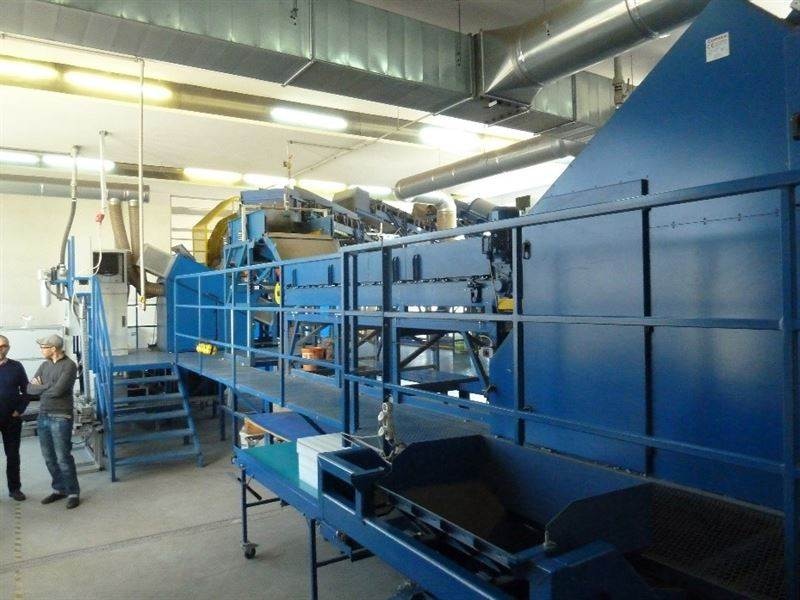Jan 21 2019
A novel sensor fusion method based on 3D imaging and X-ray could potentially enhance the 3D modeling of mineral resources and also enable more efficient sorting of precious minerals and metals.
 Prototype of ore dressing equipment to be built in Comex’s research environment. (Image credit: VTT)
Prototype of ore dressing equipment to be built in Comex’s research environment. (Image credit: VTT)
In association with international research institutions, mining lobbies, and businesses, VTT Technical Research Centre of Finland Ltd (VTT) is managing the sensor development process via an EU project dubbed X-Mine.
Coordinated by VTT, a three-year H2020 project known as X-Mine has received EUR 9.3 million from the European Commission. The project creates innovative sensor technologies for drill core analyses of mining companies and allows efficient sorting of precious metals and minerals in the ore. In addition, the X-Mine project enables more efficient 3D modeling of the mineral resources of mining companies and thus leads to better recovery of precious minerals.
Integrating products created by numerous sensor manufacturers with commercial ore dressing equipment, the project aims to obtain sensor fusion that enables the separation of rock containing low levels of minerals from the ore. At the turn of the year, the project reached its midway point and is advancing slowly to the piloting of ore dressing equipment as well as drill core analyzers at mines during the spring of 2019. In Sweden and Greece mines, a pair of drill core analyzers was adopted towards the 2018 end, and the project consortium members are now testing innovative sensors for ore dressing equipment and creating ore dressing algorithms. About 15 research partners and businesses from across the globe are members of the project consortium.
To the participating businesses and research institutions, the project provides a chance to create sensor-based solutions for the mining sector along with experts dealing in the exploitation of geological mapping, mineral processing, and ore resources. The aim of the consortium is to come up with solutions for efficient extraction of ore and to reduce the amount of waste produced by the ore extraction activities. On the whole, the project is anticipated to decrease the dangerous environmental effects of mining by lowering the requirement for chemical processing and ore processing in mineral recovery. Moreover, the project consortium is exploring ways to decrease the production costs of mining companies.
As part of the X-Mine project, two prototypes are being developed and piloted to fulfill the requirements of mining companies. Mining companies dig up materials to examine the site of the ore, the amount of minerals present, and thus assess their mineral resources. Moreover, the project consortium is aiming to boost the efficiency of ore exploration by devising instruments that can be used for scanning on-site drill core samples through the latest and highly susceptible layered imaging technology based on composition analyses and X-ray fluorescence. On-site analysis and scanning of drill core samples expedite the assessment of ore resources.
Furthermore, the project anticipates enhancing the workings of automated mineral selectivity systems at the extraction phase by ascertaining a sensor fusion method that integrates X-ray transmission scanning along X-ray fluorescence technology, a line of highly susceptible sensors developed during the project, and 3D vision technology with fast analyses with the aid of efficient algorithms. More efficient ore dressing not only boosts resource efficiency and the profitability of mining companies but also decreases the mining’s dangerous environmental impacts.
The project received funding via the Horizon2020 instrument—the EU’s research and development program that has EUR 80 billion to fund European research initiatives over a period of seven years (between 2014 and 2020). The EU’s H2020 funding program promises more discoveries, innovations, and world-firsts by taking great concepts from the laboratory to the market. The overall budget for the three-year study is EUR 11.9 million, of which EUR 9.3 million was granted by the European Union.
The X-Mine project is based on international collaboration between research institutions from Sweden (Uppsala University, Geological Survey of Sweden), Finland (VTT), and Romania (Geological Institute of Romania) and also sensor and equipment producers from Finland (Advacam Oy), the Czech Republic (Advacam s.r.o.), Poland (Antmicro Sp. z o. o. and Comex Polska Sp. z o. o), and Sweden (Orexplore AB). End users that took part in the project include mining firms in Greece (Hellas Gold S.A.), Bulgaria (Assarel Medet Jsc.), Sweden (Lovisagruvan AB), Cyprus (Hellenic Copper Mines Ltd), as well as mining lobbies in Australia (Swick Mining Services Ltd) and Sweden (Bergskraft).